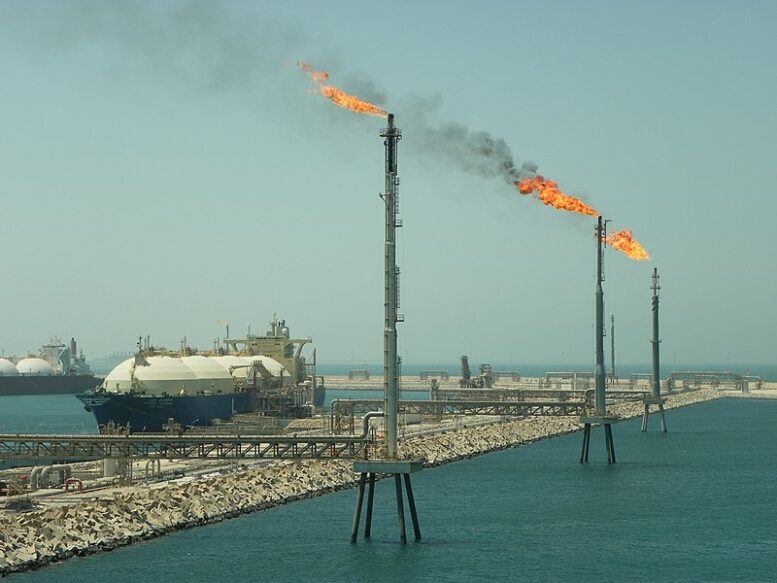Using Liquefied Natural Gas (LNG) as a marine fuel is a sensible strategy amid tightening regulations, new economic realities and the development of the new zero carbon fuels of the future, says Panos Mitrou, Head of Gas, Lloyd’s Register (LR).
Panos Mitrou, LR’s Global Gas Segment Manager, has been dealing with LNG as fuel for the past eight years.
Over this period, he has seen the use of LNG expand and diversify from just a few LNG carriers using boil off gas for convenience to far wider adoption across a range of shipping sectors. In recent months, the LNG as fuel question is part of the decision making process in approximately 50% of new projects.
Today, despite the sceptics, he is more passionate than ever about the future for LNG as a fuel. There are plenty of naysayers who discount LNG because, as a hydrocarbon, it still has a footprint. Combustion usually involves some methane slip, and unburnt methane can be 30 times, 85 times for those who prefer to overweigh short term impact, more potent as a greenhouse gas (GHG) than carbon. Therefore, they claim, LNG used as a marine fuel generates only modest GHG savings. Mitrou is not remotely fazed by these arguments, which he addresses patiently. He then lists some of the reasons why adopting LNG at this time makes eminently good sense.
Maturity and tightening regulations
LNG as fuel is already a mature technology capable of meeting stricter carbon reduction regulations likely in phases 3 and 4 of the IMO’s Energy Efficiency Design Index (EEDI).
Embryonic marine fuels such as ammonia and hydrogen may offer significant potential in the longer term, Mitrou concedes, but LNG can deliver a concrete 15% and more reduction of GHG today. In the mid term, it could embrace primarily sustainable biogas and to a lesser extent, synthetic methane. Its nature as a hydrogen carrier and its cryogenic technology may constitute some of the foundations for the fuels of the future.
There are many gaps in safety or terminal handling regulations relating to these new fuels, Mitrou points out, let alone any class rules. We are working in expediting this process but, as LNG has taught us, this takes time.
The LR expert moves on to some of the other reasons underpinning LNG fuel development. As well as being a mature technology, LNG offers significant practical and economic benefits. Anybody ordering an LNG fuelled ship today can be assured that there will be suitable global bunkering infrastructure in place at key locations by the time the vessel is delivered, he predicts. And shipowners will be able to rely on an abundant future supply of gas, less susceptible to geopolitics and volatile price swings than oil, and much cheaper than other sulphur compliant fuel options.
Wide emission benefits
In its early stages, LNG was pioneered by the leading cruise line companies due to the pressure to reduce SOx, NOx; and particulates were being generated, Mitrou explains. At that time, the emission of GHGs was not on the table. Cruise lines, Mitrou points out, were therefore focused on local pollution aspects, and these progressive companies consequently installed the engines that were most suitable for cruise ship operation. They were usually four-stroke, low pressure units with relatively poor methane slip performance and therefore only modest GHG reduction properties. But Mitrou says that this move was not deliberate – cruise lines had other priorities, namely local pollution levels.
He highlights that technology advances on methane slip in most combustion technologies – particularly in low pressure, Otto cycle engines – have had significant reductions already, and advocates that more is to come through proper engineering assessment and analysis. He also points to high pressure, two-stroke diesel cycle engines and the combined cycle gas turbine, not yet used in a marine context, which could generate virtually no methane emissions. As well as advances in combustion technology, Mitrou predicts that methane performance will be improved further by exhaust gas after treatment technologies. Engine designers and manufacturers are engaged in intensive research and development projects on these issues, he says.
Carbon pricing around the corner
Mitrou turns to the political backdrop. He expects that the EU will implement some form of carbon pricing before the middle of this decade, a move that is likely to involve charterers in the carbon reducing process. A pricing scheme has significant implications both for ship operators and their customers and will, of course, widen the price gap between sulphur compliant fuel oils and LNG. This could even stimulate retrofit demand, Mitrou believes, which so far is limited by expense and complexity. But carbon pricing would change the cost benefit analysis overnight, transforming the payback profile. Apart from low LNG bunker prices, vessels would have another significant cost advantage and could, of course, continue to trade without penalty in proliferating emission control area.
Finally, Mitrou concludes with a plea to all parties in the marine fuel debate. He believes that the future lies in a widening energy mix in which LNG has an important part to play. If hydrogen is to be developed over the medium term, for example, then the cryogenic expertise developed in developing LNG as a fuel will be essential. And the companies with experience and a track record in operating LNG fuelled vessels are likely to be amongst the first to adopt liquid hydrogen as fuel.
It’s not an either/or, he insists. Marine fuels will comprise a greater mix and their evolution requires everyone’s collaboration.
Source: https://www.lr.org/en/insights/articles/whats-next-for-lng/
asIn the idea, character, or condition of, limiting the view to certain attributes or relationsMore (Definitions, Synonyms, Translation)
